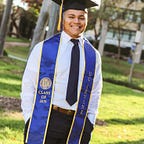Simple 5-Step Guide to Fighting Misinformation
“IBM has recently estimated that we generate 1.5 quintillion bytes of information each day… if you printed it out it would fill a bookcase that stretched along the equator and stood up a mile high”. -David J. Helfand
To say that mankind is in the information age would be a critical understatement. Limited access to reliable information used to be what was thought of as holding the world back from advancement, but even with unlimited data at our fingertips we still face the very same problem. We generate trillions and trillions of bytes of information each and every day that is almost entirely free from scrutiny and curation. Because of this, we are no longer in the dark yet we are blinded by the very light we thought we desperately needed.
The Role of Science
In order to navigate this treacherous terrain, it’s imperative we understand the role that science plays.
- Science does not “prove” anything
Many people make the mistake of using science as a way to prove a topic, issue, or question. Making such statements such as science has “proven” an objective fact about the world true, or that the science of a subject is “settled”. We’ve all heard it whether it be from the news, peer, friend, or maybe we even made this mistake ourselves. Unfortunately, science does not prove anything to be true, it simply gathers evidence supporting or not supporting, testable hypotheses. Now the evidence can build and be overwhelming in a particular area, but there is always more truth to be had.
The way I like to explain this concept to people is through the analogy of the sculptor and his tool. A sculptor begins with a piece of marble and a vision of what he wants to create. He uses his chisel and hacks away pieces of his masterpiece that he knows to be useless to him. As he chisels away the unnecessary pieces of marble eventually he is left with David. Scientists use science as their tool of choice to remove what is known to be incorrect about the world. While the truth has always been, scientists use the tool of science to uncover the truth about the world we live in today.
2. Science will always have some degree of uncertainty.
Because we are not perfect, we cannot produce perfection. No matter what steps we take when constructing an experiment there will always be some error, whether it be in our methodology, measurements, or the analysis of results. Because of this, there will always be some degree of uncertainty when dealing with science. Each scientific experiment will have varying degrees of precision and thus reliability. Until we evolve to be perfect ourselves, we will not have perfect science.
How to Spot “Bad Science”
As a small disclaimer before we get into the details of these points, this is not to undermine the recommendations of qualified health professionals or experts in any given field. But more-so to help guard ourselves against possibly spreading misinformation, or even disinformation, ourselves.
- Beware sensationalized headlines.
- With the rise of social media and YouTube, clickbait has become a real issue that news outlets have had to compete with. Sensationalized headlines are designed to drive clicks and viewership often at the cost of accuracy. Over-stating the findings of a given scientific study is one thing, completely misrepresenting them is another that happens all too often.
2. Misinterpreted results
- As discussed above, science can seem fickle for the uninformed. Conclusions can seem wishy-washy, and the lack of sweeping statements can often make people uneasy. Beware of news articles that make grandiose conclusions in the name of science. Always try and read original research and see if the results are corroborated by the researchers.
3. Correlation is not causation
- I’m sure many of us have heard this statement time and time again. But I often see people invoking this fallacy when it suits their argument. It’s important to give an explanation as to why the two variables that are displaying a relationship are correlative and not causative, then it’s important to discuss if that correlative relationship is meaningful or not. It’s not good practice to simply dismiss a research study under the statement “correlation is not causation” it’s crucial to explain why.
4. Unsupported conclusions
- Speculation is an important aspect of the scientific process. It helps drive thoughts forward leading to more hypotheses and more research. However, it’s important to be sure that the conclusions that a news article is making are supported by the cited research. There’s nothing wrong with speculation, but a clear delineation must be made to separate speculation with supported conclusions.
5. Lack of evidence or non-peer-reviewed material.
- When the authors of a scientific study wish to publish the findings in a scientific journal, it must go through what is called peer review. This is when other scientists critique the study and appraise the validity of the methodology as well as the accuracy of the findings. If the study meets a certain standard, it is then published in the journal. It’s important to be wary of news outlets citing research that has not gone through this process, which are considered “pre-print”.
Our Collective Responsibility
The truth is, we’ve crossed the event horizon. The informational pandora’s box that we pried open will never be shut again (save some catastrophic event). Misinformation will be commonplace moving into the future, but there is still hope. We — as cognitive beings — have to use the tool which sets us apart from our primate ancestors. When evaluating information the only thing we really can do is think about what we are seeing, and then think about if the information is worth propagating. After all, WE are the Medium with which false information flourishes.
